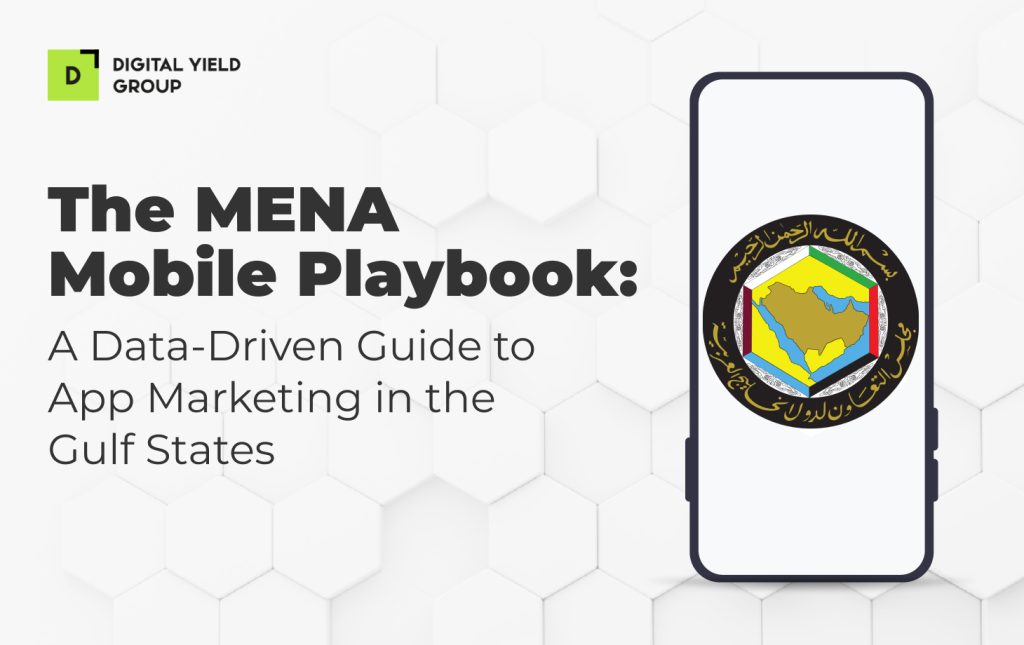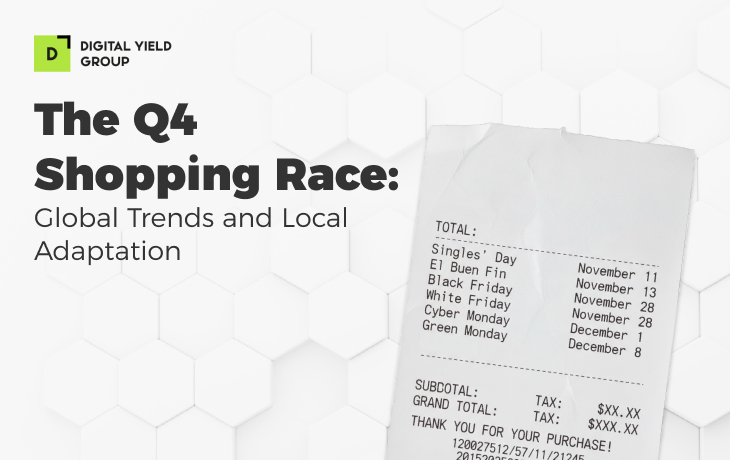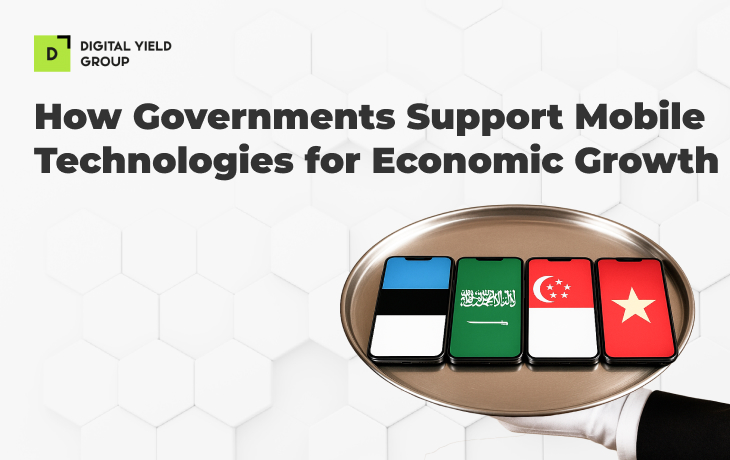The MENA Mobile Playbook: A Data-Driven Guide to App Marketing in the Gulf States

The Gulf region is one of mobile marketing’s biggest opportunities and one of its least understood. With countries like Saudi Arabia and the UAE leading the way, the Gulf Cooperation Council (GCC) is home to a highly engaged, high-spending mobile audience. The potential for strong lifetime value is hard to ignore. Yet for many international companies, entering this market still feels like navigating without a map.
This guide aims to change that. Backed by market insight, it offers a clear look at what makes the mobile landscape in the Gulf States so unique, and how to build strategies that actually work here.
I. The GCC Mobile Landscape: A Data Snapshot
Mobile and internet access in the Gulf is among the highest in the world. In Saudi Arabia, there were 48.1 million mobile connections recorded in early 2025, which is about 140% of the total population. Internet penetration stands at 99%, and nearly all access comes through mobile devices. This level of connectivity reflects how deeply digital habits are embedded in daily life. Users are already comfortable managing everything from banking to entertainment through mobile apps, creating strong conditions for growth across categories.
The region is also setting the pace for 5G adoption, a testament to ambitious rollout plans, supportive regulation, and high consumer demand have pushed the GCC to the forefront of next-generation connectivity. The 5G market was valued at 3.5 billion US dollars in 2024 and is expected to reach 31.8 billion by 2033. With that kind of infrastructure in place, the door is wide open for more advanced mobile experiences, including high-quality streaming, cloud-based tools, and augmented reality.
Consumers across the Gulf are showing strong purchasing power and a clear shift toward mobile commerce. In the UAE, 67% of shoppers made their most recent purchase through a smartphone. Saudi Arabia follows closely at 66%, ahead of many other digitally advanced markets, including Singapore. This shift is fueled by convenience, improved security, and smoother experiences across both online and physical channels. Since 2022, mobile shopping in the region has grown by 23%, reflecting how quickly digital habits are deepening.
II. Capitalizing on Seasonal Marketing: The Ramadan Effect
The phenomenon known as the “Ramadan Effect” consistently drives a significant spike in mobile app engagement and revenue across the Middle East. In 2025, in-app purchase revenue reached 1.7 billion US dollars, an 18.6% increase compared to the previous year. App sessions rose by about 15%, while non-organic installs climbed an estimated 10% across categories.
Shopping applications experienced the most substantial uplift, with sessions across the UAE, Saudi Arabia, and Qatar increasing by over 20% YoY, totaling 682 million sessions. Installs for shopping apps surged by 111% in the first half of Ramadan compared to the same period in 2024. Finance apps came in second place, generating 650 million US dollars in revenue, a 29.35% gain. The consistent and significant YoY growth in IAP revenue and sessions during Ramadan indicates that this period is not merely a general uplift but a distinct, high-value spending window. This means mobile marketers must recognize Ramadan as a critical, distinct marketing season, rather than just another promotional period.
Timing plays a major role in Ramadan campaign success. As daily routines shift, so do digital behaviors. Users are most active late at night after Iftar (48%), after Taraweeh prayers (38%), and in the early morning hours before fasting begins (24%). These windows are ideal for delivering ads, sending push notifications, and promoting time-sensitive offers.
Campaigns that perform best during Ramadan are personalized, localized, and informed by data. Working with the right advertising partner plays a key role in making that happen. At DYG, we not only collaborate with trusted supply partners who offer access to untapped audiences, but also focus on optimizing performance around regional behavioral spikes – such as those seen during Ramadan.
By using AI-driven targeting and recommendation engines, it is now possible to deliver more relevant content, while promotional tactics like bundle offers, limited-time discounts, and cashback rewards align with the way users shop during this season. Video and interactive formats also see strong engagement, especially when tied to popular Ramadan search trends. Cooking tutorials, gift ideas, and how-to videos are among the top content categories, with 78% of users actively seeking out these unique “Ramadan dayparts.”
Culturally relevant messaging is another key differentiator. Unsurprisingly, campaigns that include Arabic-language creative and Ramadan-specific themes consistently outperform generic content. According to Google’s MENA Ramadan Insights Report, engagement can rise by as much as 40% when the messaging is localized. There is no doubt that A/B testing allows for performance tuning at the segment level, ensuring that both content and delivery match the rhythms of the season. Expert marketers will work closely with brands to fine-tune creative, optimize delivery, and build data-backed strategies that meet the moment.
III. High-Growth App Categories in the GCC
Understanding which app categories are gaining traction in the Gulf helps sharpen focus for businesses looking to grow in the region. Four areas in particular stand out for their momentum and long-term potential:
Gaming
The gaming sector in the Middle East continues to grow at an impressive pace. In 2024, the market was valued at 4.56 billion US dollars, with forecasts pointing to 9.57 billion by 2030. On iOS, top-grossing genres include action (20.22 percent), strategy (13.94 percent), and casual (11.52 percent). On Google Play, strategy leads with 22.46 percent, followed by action at 16.28 percent and role-playing at 15.13 percent. Titles like PUBG Mobile, Roblox, and Subway Surfers consistently top both download charts and daily active user rankings.
Government support has become a major driver of growth. Saudi Arabia’s Vision 2030 includes a 38 billion dollar investment plan for gaming and a goal of launching 250 (!) local studios by the end of the decade. This commitment helps reduce investment risk and reinforces the sector’s role as a pillar of economic diversification.
Luxury Shopping
Luxury retail is also gaining significant ground. High disposable income, a strong regional appetite for premium brands, and a steady flow of high-spending tourists have all helped shape a thriving luxury shopping ecosystem. E-commerce is becoming central to this space, with mobile-first platforms seeing steady growth.
Apps like Ounass are leading the way by offering high-end experiences such as two-hour delivery in Dubai, curated collections across more than 2,000 global brands, and seasonal features tailored to local culture, including Ramadan gifting. Meanwhile, platforms like Libas are tapping into the rising interest in pre-owned luxury, combining sustainability with access to rare and exclusive items. This segment is growing quickly and presents real opportunities for brands focused on value-driven, conscious consumption.
Casual shopping and Digital Payments
Online shopping has become part of daily life for many consumers across the Gulf. Around one-third of people in the UAE and Saudi Arabia now shop online regularly, and daily online shopping activity has grown by 139 percent across the region since 2020. The UAE has seen the sharpest increase, up 320 percent, followed closely by Saudi Arabia at 300 percent.
Top shopping apps reflect both global and local preferences. Amazon and SHEIN remain widely used, while platforms like Noon and Talabat continue to grow as strong regional players. Government-led programs, including Saudi Arabia’s Vision 2030 and the UAE’s National Innovation Strategy, have played a key role in enabling this growth, with investment in logistics, infrastructure, and digital inclusion. The rise of niche product categories also suggests strong potential for specialized e-commerce apps tailored to specific consumer interests.
Entertainment
Outside of gaming, entertainment apps are seeing a sharp rise in both downloads and revenue. In the first half of 2024, entertainment apps across the MENA region recorded a 34 percent YoY increase in revenue and a 10 percent increase in downloads. In the UAE, streaming platforms like Netflix and Disney+ remain popular, alongside regional favorites such as Shahid and TikTok.
Growing interest in video, short-form content, and immersive formats like virtual reality continues to push demand for fast, reliable connectivity. As 5G becomes more widely available, the region is well positioned to support richer entertainment experiences, which opens the door for continued innovation and audience growth.
IV. Conclusion: Partnering for Prosperity in the Gulf
The GCC mobile market presents a powerful opportunity. It is shaped by a digitally fluent, high-income population and supported by some of the world’s most advanced 5G infrastructure. But tapping into its full potential takes more than applying a standard global strategy. What works here is shaped by cultural context, seasonal rhythms, and a strong preference for personalized, localized experiences.
Marketers need to take a deliberate approach. Success depends on understanding what matters to consumers on a deeper level: how they live, when they engage, and what earns their trust. Working with a trusted advertising partner makes a real difference. Teams that understand the nuances of the region and have access to the right supply platforms are better positioned to deliver results. At DYG, we help brands navigate these complexities with strategies built for the Gulf, not just translated into it.
In the end, technology is only part of the equation. Lasting success in the Gulf comes from cultural fluency and meaningful connection, built thoughtfully and sustained over time.


